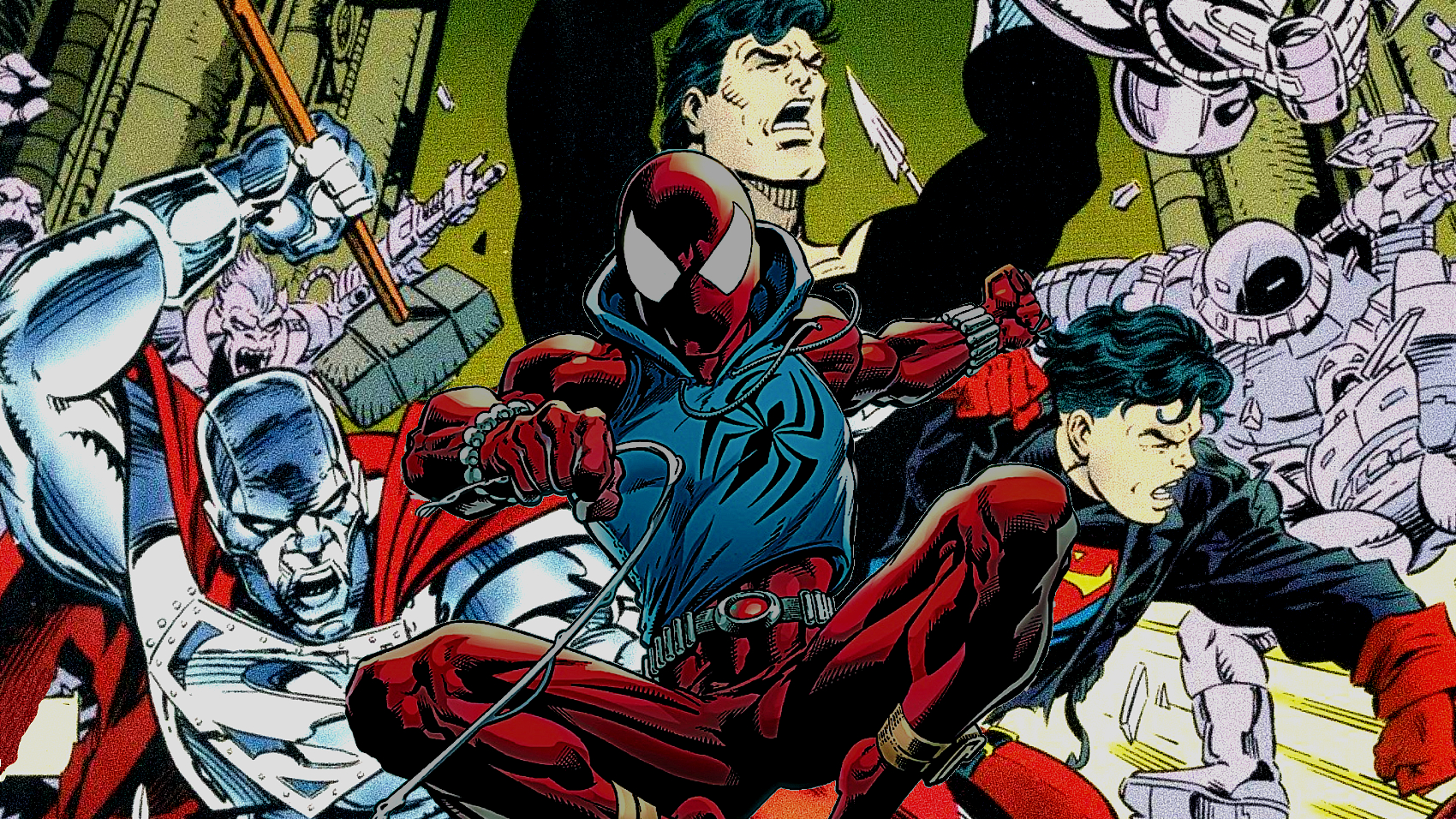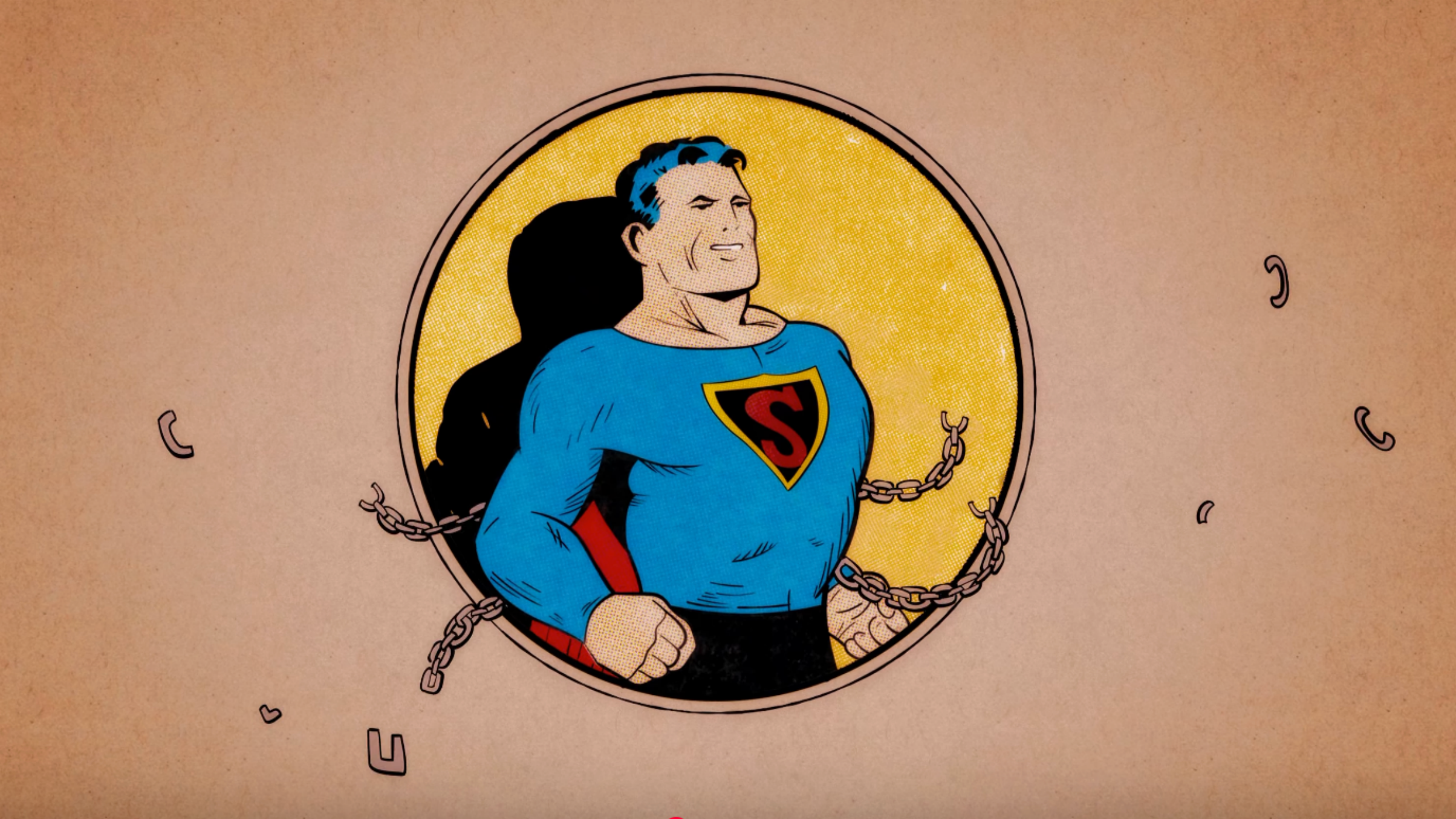
Occasionally, the world of superhero comic books undergoes a groundbreaking change. Events such as Superman’s death by Doomsday and the unveiling that the real Spider-Man was not Peter Parker but Ben Reilly leave fans in awe. These instances are more than just surprises; they are catalysts for transformation. They propel characters and stories into unexplored territories, often rejuvenating series that might have lost some of their spark after being published for many years or even decades. In fact, the emergence of a new Superman and Ben Reilly’s adventures as the Scarlet Spider provided fans with exciting new storylines to delve into, discuss, and argue about passionately.
When the strict adherence to comic book rules (canon) and storyline consistency (continuity)—which maintain the established order—becomes overly rigid, innovative storytelling may be hindered, leading to complex, perplexing, and ultimately off-putting narratives for readers. While these rules ensure narrative coherence and respect tradition, they can resist fresh or groundbreaking ideas when taken too literally.
The Undeniable Heaviness of DC and Marvel Canon and Continuity

It’s hard to argue against the fact that the introduction of four new characters as potential Supermen and Ben Reilly revitalized their series, surprising old fans while attracting new ones. However, any freshness they brought was overshadowed when everything was reset to normal, as it turned out that Superman wasn’t actually dead; he was merely in a healing coma. In the case of Spider-Man, his complex storyline eventually showed that Peter Parker was indeed the original Spider-Man all along. The confusion surrounding Ben Reilly? That can be traced back to the manipulations of Norman Osborn, the Green Goblin, who had been thought dead but suddenly reappeared out of nowhere.
The comebacks of Superman and Spider-Man illustrate a significant challenge in comic books regarding canon and consistency: the need for creative liberty. In both instances, the creators devised convincing methods to modernize these iconic characters for a fresh audience. Undeniably, their techniques were disruptive, causing readers and fans to grapple with challenging and uncomfortable situations. More debatably, these narratives provoked the awareness that everything previously known or assumed about the story was now uncertain. However, adhering too rigidly to outdated continuity may hinder the creativity required to sustain a comic book series for decades post-debut.
The Supremacy of Superman’s Story

In simple terms, if a writer were tasked with creating a new Superman story today, they would be limited by the original character traits and elements that have developed over nearly 90 years. This means they’re not entirely free to create the best Superman story for modern times, but rather must fit their story within a pre-existing narrative framework.
As a dedicated movie buff, I wholeheartedly resonate with the sentiments expressed by Matt Fraction and Greg Pak in their interviews. In a 2013 chat with Bleeding Cool, Fraction boldly declared, “Continuity is the devil,” echoing my own feelings about the constraints it imposes on storytelling. Similarly, Pak, when speaking to Maclean’s, pointed out, “As a writer, being bound by too much continuity can suffocate a tale.” These esteemed writers seem to agree that adherence to continuity can hinder the creative freedom needed to transform a title from ordinary to extraordinary.
While sticking to established stories and timelines doesn’t guarantee failure, it can indeed boost creativity if adaptability is emphasized. However, overemphasizing adherence to these stories may result in repetitive, uninteresting narratives that neither the creators nor the audience find satisfying.
What Hawkgirl Tells Us About Canon and Continuity

As a devoted reader, I’ve found myself often grappling with the intricacies of canon and continuity in the comics I love. These elements not only test the creators but also pose formidable hurdles for fans like me. The necessity to adhere to established canon and continuity frequently necessitates a solid grasp of the past to fully appreciate present narratives. With some series boasting decades of lore and backstory, diving in as a new or casual reader can feel like trying to swim upstream against a powerful current.
Consider the character of Kendra Saunders, Hawkgirl, who initially had her own unique storyline. Over time, however, her tale became intertwined with that of the original Hawkgirl, Shiera Sanders Hall. After Kendra’s suicide attempt, Shiera’s spirit inhabited Kendra’s body, blending the two characters and creating continuity issues for fans who aren’t well-versed in Hawkgirl’s rich history. Without understanding or delving into Sander Hall’s background, particularly her connection to Hawkman, fans would miss out on a crucial aspect of the Hawkgirl mythology. This lack of knowledge would also make Kendra Saunders’ storyline confusing, as those who admired her independence might find it odd that she eventually falls for Carter Hall’s Hawkman. To be clear, fans who were captivated by Kendra’s trauma, resilience, and independence felt let down when she was transformed into a vessel for another character’s spirit. In essence, for those unaware of – or disinterested in – the legacy, Kendra’s diminished autonomy was a frustrating narrative decision.
I firmly believe that maintaining a strong connection to the established lore and continuity in comic books plays a pivotal role, serving as the foundation for intricate, interconnected universes filled with depth and history. Characters like Batman become more meaningful when their rich backstory is considered, as it gives them a sense of purpose that resonates with readers. However, clinging too tightly to these elements can make it challenging for creators to breathe new life into legacy heroes, potentially making the stories less engaging for casual fans.
For instance, if Frank Miller hadn’t had Batman’s history to draw upon when creating The Dark Knight Returns, the process might have been significantly more difficult. Yet, an overly rigid adherence to continuity can stifle creativity and limit a hero’s ability to evolve, making them feel outdated or irrelevant to most fans. This was unfortunately evident in stories like those involving Superman replacements and Ben Reilly.
In essence, striking a balance between respecting tradition and embracing innovation is crucial for keeping these iconic characters fresh and engaging for all fans.
Has canon and continuity killed the comic book star? What do you think?
Read More
- Sony Removes Resident Evil Copy Ebola Village Trailer from YouTube
- Ashes of Creation Rogue Guide for Beginners
- Best Controller Settings for ARC Raiders
- Can You Visit Casino Sites While Using a VPN?
- Marvel Wants You to Believe Wolverine Is the Greatest Anti-Hero (But Actually He’s the Worst)
- Michael B. Jordan Almost Changed His Name Due to NBA’s Michael Jordan
- The Night Manager season 2 episode 3 first-look clip sees steamy tension between Jonathan Pine and a new love interest
- Lies of P 2 Team is “Fully Focused” on Development, But NEOWIZ Isn’t Sharing Specifics
- Crunchyroll Confirms Packed Dub Lineup for January 2026
- New Look at Sam Raimi’s Return to Horror After 17 Years Drops Ahead of Release: Watch The Trailer
2025-07-05 21:40